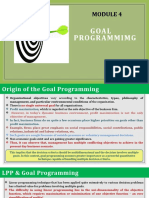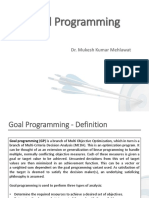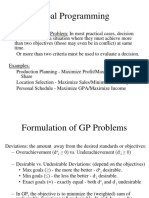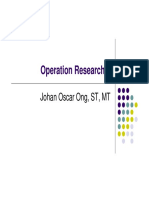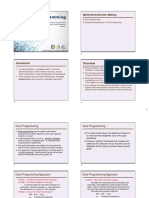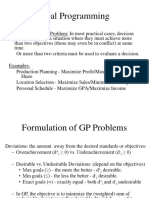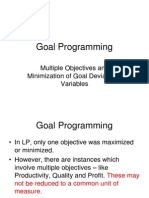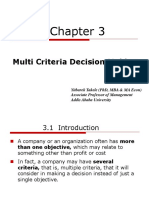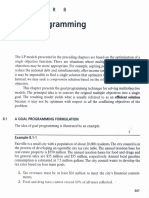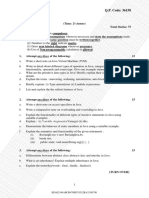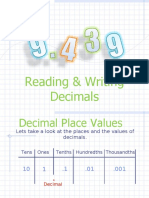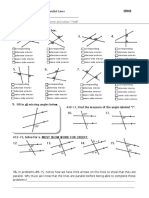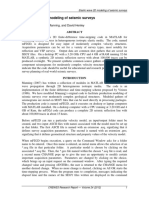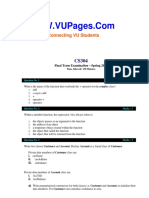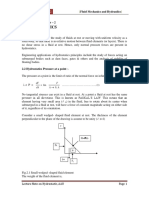0% found this document useful (0 votes)
17 views12 pages11 Goal Programming
The document discusses Goal Programming, an extension of Linear Programming that addresses multi-objective optimization problems by prioritizing conflicting goals. It outlines the two basic models of Goal Programming: pre-emptive and Archimedean, and provides examples of how to formulate and solve such problems. Additionally, it explains key terminology and concepts related to decision-making, including decision variables, criteria, and types of deviations.
Uploaded by
Medhanit G/mariamCopyright
© © All Rights Reserved
We take content rights seriously. If you suspect this is your content, claim it here.
Available Formats
Download as DOCX, PDF, TXT or read online on Scribd
0% found this document useful (0 votes)
17 views12 pages11 Goal Programming
The document discusses Goal Programming, an extension of Linear Programming that addresses multi-objective optimization problems by prioritizing conflicting goals. It outlines the two basic models of Goal Programming: pre-emptive and Archimedean, and provides examples of how to formulate and solve such problems. Additionally, it explains key terminology and concepts related to decision-making, including decision variables, criteria, and types of deviations.
Uploaded by
Medhanit G/mariamCopyright
© © All Rights Reserved
We take content rights seriously. If you suspect this is your content, claim it here.
Available Formats
Download as DOCX, PDF, TXT or read online on Scribd
/ 12
